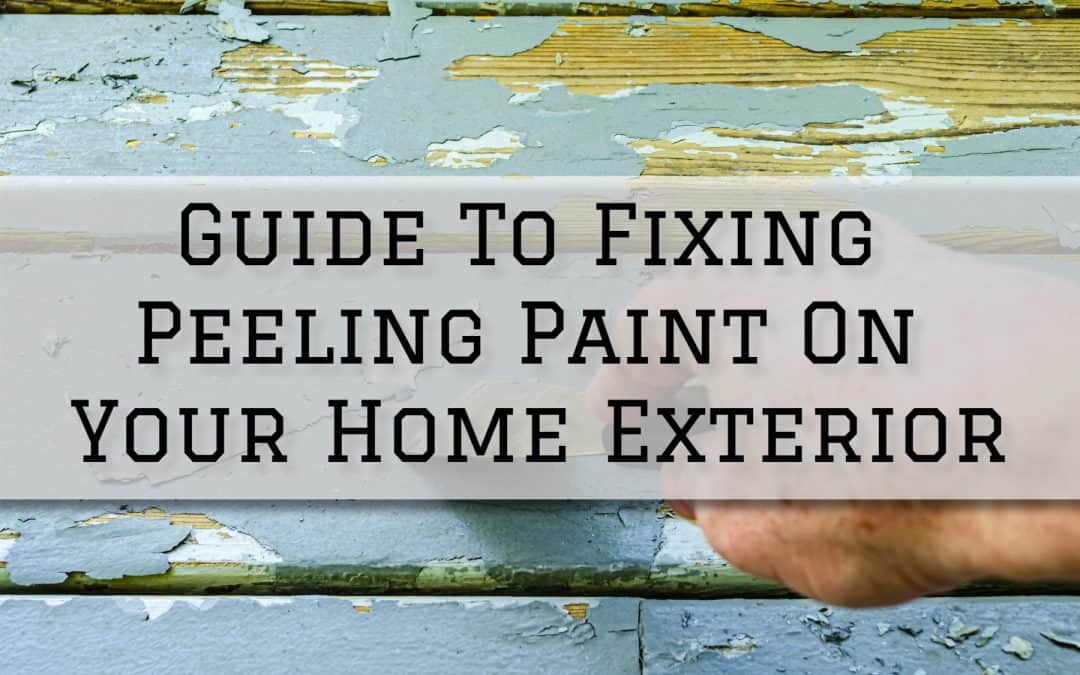Nothing diminishes the curb appeal of your home more than peeling paint on the exterior.
Not only is it unsightly, but it also exposes your home exterior material to harsh external elements, such as water, dust, and dirt, among many others, potentially leading to further damage that will be costly to fix.
Fortunately, fixing peeling paint doesn’t have to be a daunting task.
To help you with this, here’s a Guide To Fixing Peeling Paint On Your Home Exterior.
1. Assess the Extent of the Damage
Before going into your project, you must try to assess the situation and understand the extent of the damage.
This is important so you can understand why the paint on your exterior has peeled, how to exactly remedy it, and what not to do to ensure that it won’t happen again after your project.
Start by examining the affected areas where the paint is peeling; take a walk around your home, making a note of any blistered or flaking paint on the siding, trim, or other surfaces.
This initial visual inspection will give you a clear picture of the areas that require attention.
Additionally, you might want to inspect for signs of moisture infiltration, rot, or mold, since these could also be the culprit for your peeling paint.
Also, you might want to inspect the type of paint that has been used previously – is it latex, oil-based, or another type of paint?
Knowing what went wrong with the previous paint type is essential to help you select the right products for the repair.
2. Gather the Necessary Tools and Materials
Once you’ve assessed the damage, it’s time to gather the tools and materials you’ll need for the job.
Here’s a list of essentials:
- Scrapers: You’ll need paint scrapers to remove loose and peeling paint. There are various types available, including hand scrapers and power sanders.
- Paint Brushes and Rollers: High-quality paint brushes and rollers will be needed for applying primer and fresh paint.
- Primer: Choose a high-quality exterior primer suitable for your specific surface and paint type. Make sure it’s designed to adhere well and provide a solid base for the new paint.
- Paint: Select a top-notch exterior paint that matches the type and color of your existing paint. If you’re unsure, consult with a paint professional for recommendations. Additionally, ensure that the paint is designed for the specific surface you’re painting, whether it’s wood, stucco, brick, or another material.
- Drop Cloths: Protect your surroundings by using drop cloths to catch paint chips and debris.
- Cleaning Supplies: You’ll need cleaning supplies such as a mild detergent, scrub brushes, and a hose for washing and prepping the surface.
- Safety Gear: Always prioritize safety. Wear goggles, gloves, and a dust mask to protect yourself from paint chips and dust.
3. Prep Your Exterior Surface
To start your repainting project, you will now want to prep your exterior surface for a fresh coat of paint.
Start by removing all loose and peeling paint, which you can do using paint scrapers or power sanders to ensure that the surface is smooth and free from any old paint chips or flaking paint.
Next, thoroughly clean the entire surface to remove dirt, dust, and any remaining paint chips
You can use a mixture of mild detergent and water, then rinse the surface thoroughly and allow it to dry completely.
You must remember that a clean and dry surface provides the ideal canvas for a fresh coat of paint.
But, before moving on to the painting stage, apply a layer of primer to the entire surface.
Primer serves as a crucial foundation, ensuring that the new paint adheres properly to your exterior – essentially ensuring that your coat of paint won’t be peeling again anytime soon.
4. Repaint and Finish
When all is done, you can now start the fun part: painting your exterior!
When applying the paint, use a high-quality paintbrush or roller to ensure even coverage, and start painting from the top and work your way down to avoid drips and streaks.
Apply multiple thin coats, allowing each coat to dry completely before adding another – this layering technique will help you achieve a durable and long-lasting finish.
Lastly, take your time to achieve clean lines and a polished look, as these finishing touches can help enhance the overall appearance of your home.
If you need professional help with your interior/exterior painting, Campbell Painting is here for you.
Our interior/exterior painting and washing services are available in Anchorage, AK.
Call us today at (907) 444-3657 for a FREE painting estimate.
Related: Fence Painting Materials To Get For Your Project in Anchorage, AK
Signs To Tell You To Repaint Your Bathroom in Anchorage, AK

Ben Campbell is the proud owner of Campbell Painting LLC, a successful painting company based in Anchorage, Alaska. As a third-generation member of the painting industry, Ben has a deep-seated passion for his profession that started with his grandfather, who came to Alaska to sell paint. Born and bred in Alaska, Ben’s connection to his community is genuine and strong. Since 2006, he has been providing top-quality painting services, enhancing the beauty of Anchorage one building at a time. He also studied at Santa Barbara City College, solidifying his industry knowledge. Ben’s journey, including overcoming adversity, is a testament to his resilience and commitment to his craft, which is reflected in the success and reputation of Campbell Painting LLC.


Recent Comments